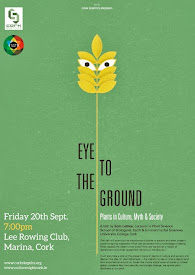London Calling: The Science of Shuttlecocks
Well, who would have thought Olympic Badminton would get so interesting?
If you're reading this in Ireland, you'll recall the short-lived 'controversy' over the religion of badminton and today we've seen eight female players disqualified over match-fixing scandal. We really should have taken our eyes off the action in the pool and on the beach volleyball arena and kept an eye on the court.
Any badminton I've played myself has been the back-garden or windy-beach variety so I've had the distinct handicap of playing with sub-standard, plastic shuttlecocks (that's the odd device that the players are knocking back and forth). Not good enough to coax out the limited skills even I possess. Perhaps I should have been using the top-of-the-line variety?
The Olympic shuttlecocks are made from 16 goose feathers. Middle of the road shuttlecocks will try and get away with using duck feathers but they generally dry out and crack much more quickly.
According to the laws of the game, controlled by the Badminton World Federation (BWF), the shuttle can be of natural and/or synthetic materials as long as their "flight characteristics generally shall be similar to those produced by a natural feathered shuttle with a cork base covered by a thin layer of leather". Amongst the guidelines are that the feathers should be of uniform length (62-70 mm) and that the device should weigh between 4.74-5.50 grams.
A comparitive study of synthetic versus natural (pdf) shuttlecocks has shown that the natural shuttle had a lower drag coefficient at low speeds compared to a higher drag coefficient at high speed. The synthetic shuttle showed the opposite trend - lower drag at higher speed.
The laws of the game even allow you to test a shuttlecock for speed, in order to ensure that you're dealing with the real thing - slight imperfections in either direction can have significant effects on the flight and behaviour of the shuttlecock in the air.
To test a shuttlecock, one should use "a full underhand stroke which makes contact with the shuttle over the back boundary line". If the shuttle lands between 530 and 990 mm short of the other back boundary line, you can rest easy.
However, a recent study of the trajectory of a shuttlecock in badminton (pdf) has suggested that a more scientific approach can be used to measure shuttlecock speed and that this could be used to "replace the traditional subjective method of the Badminton World Federation based on players’ striking shuttlecocks, as well as applying research findings to improve professional knowledge of badminton player training".
The authors of the study found that the "special structure" of the shuttlecock makes its trajectory "perform unsymmetrical motion when playing". Due to its large surface area, shuttlecocks fall more slowly than expected due to increased drag. Despite this, they showed that the air force drag on the shuttle was proportional to the square of the shuttlecock velocity. This seems to fit in perfectly with what we would expect - the harder you hit the shuttle, the more opposite drag the shuttle experiences.
Enjoy the badminton!
If you're reading this in Ireland, you'll recall the short-lived 'controversy' over the religion of badminton and today we've seen eight female players disqualified over match-fixing scandal. We really should have taken our eyes off the action in the pool and on the beach volleyball arena and kept an eye on the court.
Any badminton I've played myself has been the back-garden or windy-beach variety so I've had the distinct handicap of playing with sub-standard, plastic shuttlecocks (that's the odd device that the players are knocking back and forth). Not good enough to coax out the limited skills even I possess. Perhaps I should have been using the top-of-the-line variety?
The Olympic shuttlecocks are made from 16 goose feathers. Middle of the road shuttlecocks will try and get away with using duck feathers but they generally dry out and crack much more quickly.
According to the laws of the game, controlled by the Badminton World Federation (BWF), the shuttle can be of natural and/or synthetic materials as long as their "flight characteristics generally shall be similar to those produced by a natural feathered shuttle with a cork base covered by a thin layer of leather". Amongst the guidelines are that the feathers should be of uniform length (62-70 mm) and that the device should weigh between 4.74-5.50 grams.
A comparitive study of synthetic versus natural (pdf) shuttlecocks has shown that the natural shuttle had a lower drag coefficient at low speeds compared to a higher drag coefficient at high speed. The synthetic shuttle showed the opposite trend - lower drag at higher speed.
The laws of the game even allow you to test a shuttlecock for speed, in order to ensure that you're dealing with the real thing - slight imperfections in either direction can have significant effects on the flight and behaviour of the shuttlecock in the air.
To test a shuttlecock, one should use "a full underhand stroke which makes contact with the shuttle over the back boundary line". If the shuttle lands between 530 and 990 mm short of the other back boundary line, you can rest easy.
However, a recent study of the trajectory of a shuttlecock in badminton (pdf) has suggested that a more scientific approach can be used to measure shuttlecock speed and that this could be used to "replace the traditional subjective method of the Badminton World Federation based on players’ striking shuttlecocks, as well as applying research findings to improve professional knowledge of badminton player training".
The authors of the study found that the "special structure" of the shuttlecock makes its trajectory "perform unsymmetrical motion when playing". Due to its large surface area, shuttlecocks fall more slowly than expected due to increased drag. Despite this, they showed that the air force drag on the shuttle was proportional to the square of the shuttlecock velocity. This seems to fit in perfectly with what we would expect - the harder you hit the shuttle, the more opposite drag the shuttle experiences.
Enjoy the badminton!


























0 comments:
Post a Comment